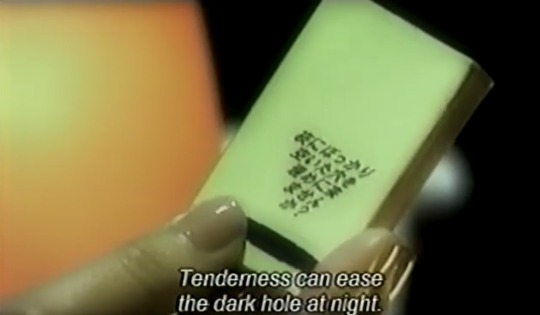#junko wada
Text
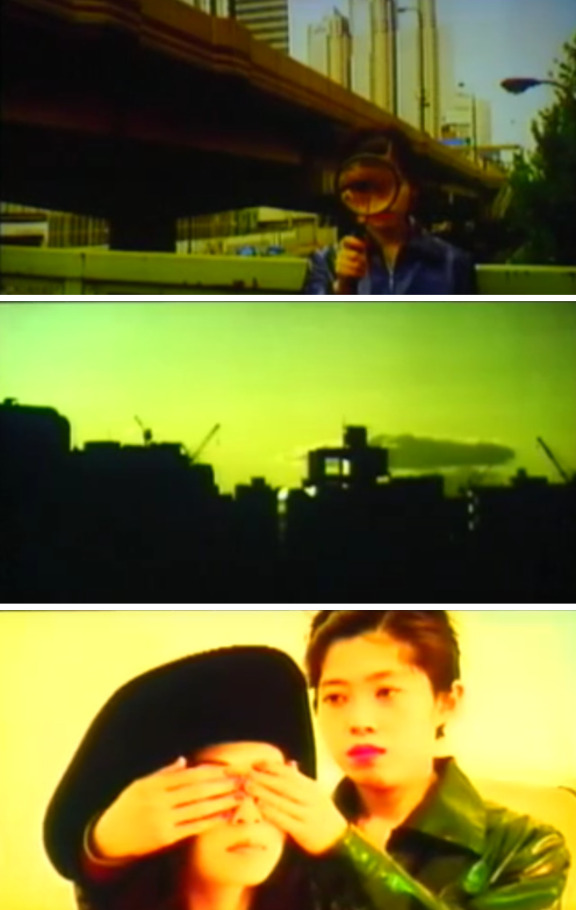
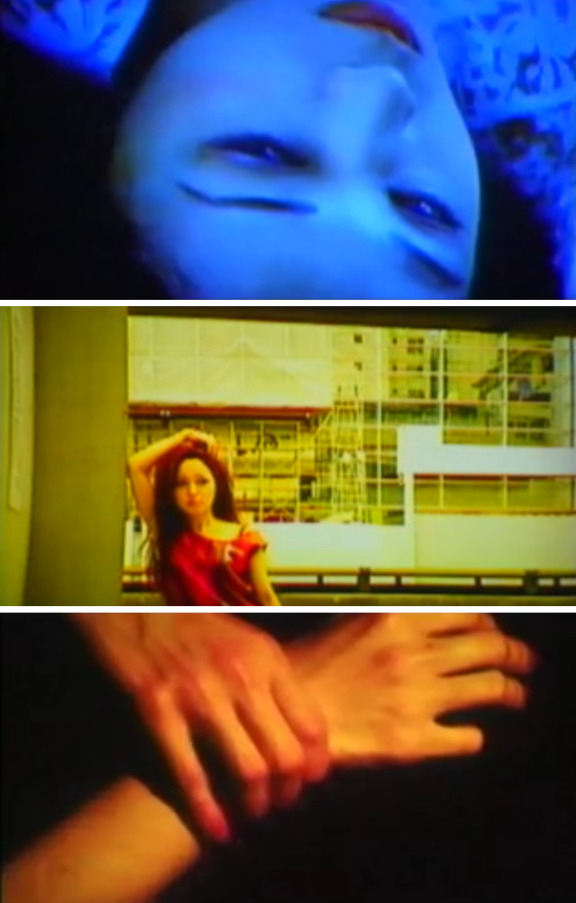

Shocking Peach (1996)
2 notes
·
View notes
Text

#ボディドロップアスファルト#body drop asphalt#body drop asphalt 2000#junko wada#wada junko#和田淳子#sayuri oyamada#oyamada sayuri#小山田サユリ#cinema#japanese#asian#experimental cinema#stills#my uploads
1 note
·
View note
Note
how do you get your art to look the way it does I am so interested in your style atm!
awh thank uuu :)
it's a mix of select and fill and vector layers which i started to understand a bit better and they are becoming a little less annoying to keep track of. lineless art with crisp edges
ummm other than that i've just been very inspired by artists like Junko Mizuno, Mizna Wada and as of recently Nathan Jurevicius mostly a lot of their old stuff but every they've made of what i've seen is so good!

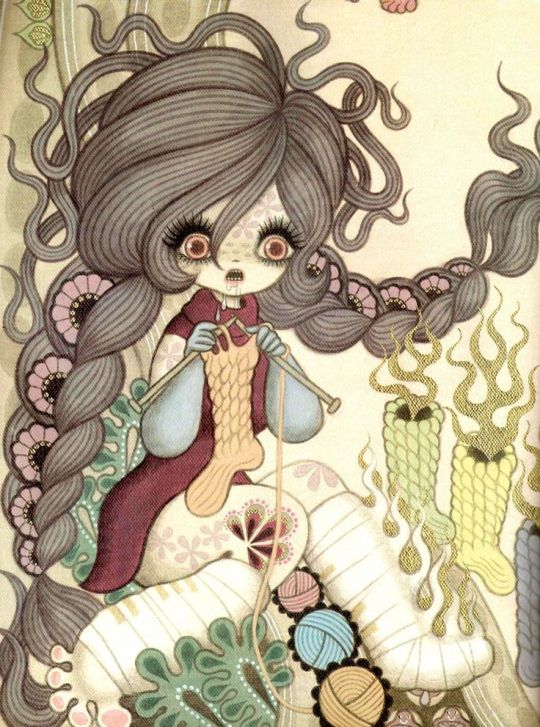

among many other things...
12 notes
·
View notes
Text

Body Drop Asphalt (Wada Junko, 2000)
This reminds me of the turn of the millennium Japanese indie music scene (what i know if it) more than any other movie i've seen. Aesthetically, tonally, sonically. Lost and lonely girl unsuccessfully creating a better self through writing. Equal measure fun and despair, riding in this girl's mind and the primitive CGI places it goes.
2 notes
·
View notes
Text
Part 3 out of 3 of:
Danganronpa characters as Dere types (finishing with dr1):
Maizono Sayaka
Deredere
Ikusaba Mukuro
Undere
Kuwata Leon
Bakadere (at first wanted to put ahodere but bakadere fits better)
Fujisaki Chihiro
Hajidere with big deredere vibes
O(o)wada Mondo
Bocchandere (bocchanderes, as the wiki says, are usually people related to the yakuza, but generally people in relations with powerful groups)
Ishimaru Kiyotaka
Kiredere (the one and only)
Yamada Hifumi
Deredere, possible ahodere since the man has little to no human interaction
Ludenburg Celestia
Kanedere
Ogami Sakura
A healthy mix of Kuudere and Deredere, with a pretty big deredere inclination
Enoshima Junko
Sadodere
Naegi Makoto
Deredere (would be a megadere if he was generally more energetic)
Kirigiri Kyoko
Kuudere/Coodere
Fukawa Toko
Healing yandere
Togami Byakuya
Hinedere/Kanedere (kanederes can also be interested in someone's status)
Hagakure Yasuhiro
Bakadere
Asahina Aoi
Deredere
BONUS:
Naegi Komaru
Ahodere/Bakadere/Megadere (ray of sunshine)
#danganronpa#danganronpa trigger happy havoc#trigger happy havoc#dr1#sayaka maizono#mukuro ikusaba#leon kuwata#chihiro fujisaki#mondo owada#mondo oowada#kiyotaka ishimaru#hifumi yamada#celestia ludenberg#sakura ogami#junko enoshima#makoto naegi#kyoko kirigiri#toko fukawa#byakuya togami#yasuhiro hagakure#aoi asahina#komaru naegi#and this is how this little series finishes#all dere types can be found in the dere fandom wiki#third part done#updated this early cause I got the sudden urge to tell you all about one of my aus
8 notes
·
View notes
Photo

Tatsuya Nakadai in Odd Obsession (Kon Ichikawa, 1959)
Cast: Machiko Kyo, Ganjiro Nakamura, Junko Kano, Tatsuya Nakadai, Tanie Kitabayashi, Ichiro Sugai, Mantaro Ushio, Jun Hamamura. Screenplay: Keiji Hasebe, Kon Ichikawa, Notto Wada, based on a novel by Jun'ichiro Tanizaki. Cinematography: Kazuo Miyagawa. Music: Yasushi Akutagawa.
As with so many foreign-language films, the English title Odd Obsession seems to miss the mark a little, but the Japanese title, Kagi, which means "The Key," also seems a little off-target, even though it was taken from the novel on which the film was based. If I were retitling it, I'd call the film something like "The Jealousy Cure," which is not only in keeping with the plot but is also supported by the way the film opens, as if presenting a case study: We see a man (Tatsuya Nakadai) in a physician's white coat standing before an anatomy chart, speaking directly at the camera. He describes the various effects of aging on the body before turning away to enter the action of the scene. We learn that he is Kimura, an intern in the clinic of Dr. Soma (Jun Hamamura), who is treating a post-middle-aged man, Kenji Kenmochi (Ganjiro Nakamura), for sexual dysfunction. The doctor advises Kenji that the injections he has been giving him are probably ineffective, and that he should try to find other ways of dealing with the problem. Kimura has also been dating Kenji's daughter, Toshiko (Junko Kano), and he has let slip to her that her father is seeing Dr. Soma. She passes the information along to her mother, Ikuko (Machiko Kyo), whom we then see visiting Dr. Soma to find out if there is something she can do for her husband. It's an awkward encounter: Ikuko is rather embarrassed by the subject of their sex life, but she resolves to do what she can to help. Kenji then discovers that his libido is stirred by the thought of anyone having sex with his much younger wife, and when Kimura comes to dinner, Kenji begins to plot ways of bringing his wife and the young and handsome intern together. As Kimura and Ikuko begin an affair -- the key from the Japanese title is the one she gives Kimura to the back gate -- Kenji's sex drive reawakens, with the added consequence of dangerously elevating his blood pressure. Odd Obsession is not so much a case study, however, as an ironic dark comedy, one in which the follies of the various characters lead to what might be a tragic conclusion if viewed from another angle than the one Ichikawa chooses. It's also a showcase for the versatility of Nakadai and Kyo, who reteamed seven years later for the more serious The Face of Another (Hiroshi Teshigahara, 1966). I think Ichikawa is a little too interested in "trying things out," such as the opening segue from breaking the fourth wall into starting the action of the film, or the freeze frames that interrupt the action in the opening section, tricks that don't feel consistent with the rest of Odd Obsession.
1 note
·
View note
Text
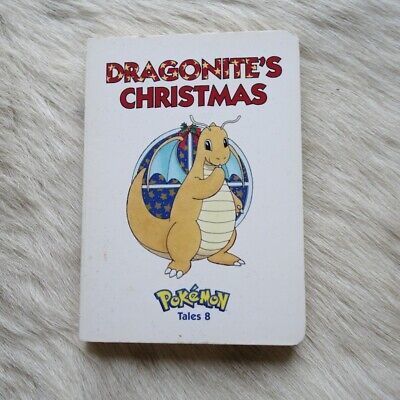
JUNKO WADA Dragonites Christmas Vintage POKEMON Book Naoyo Kimura Art 1999
0 notes
Text
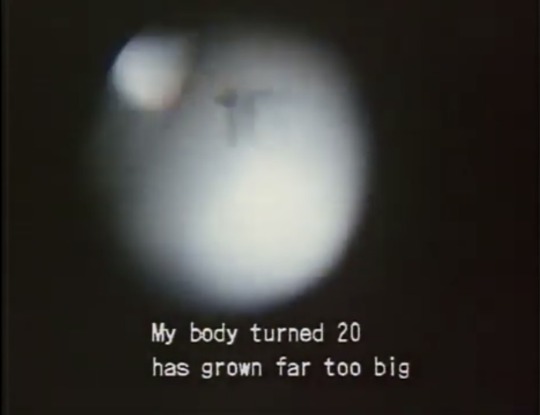

peach baby oil (1995) dir. junko wada
63 notes
·
View notes
Photo

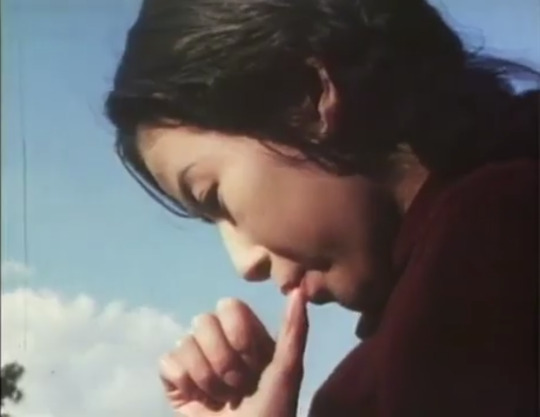

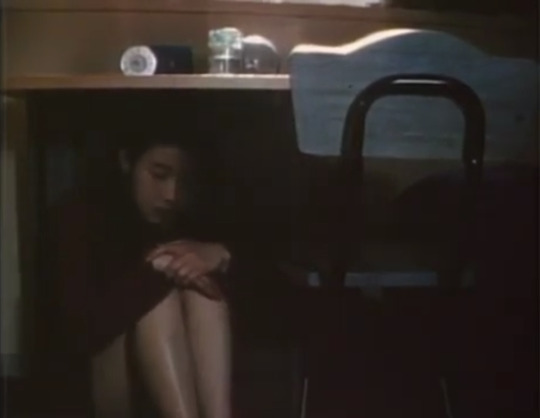

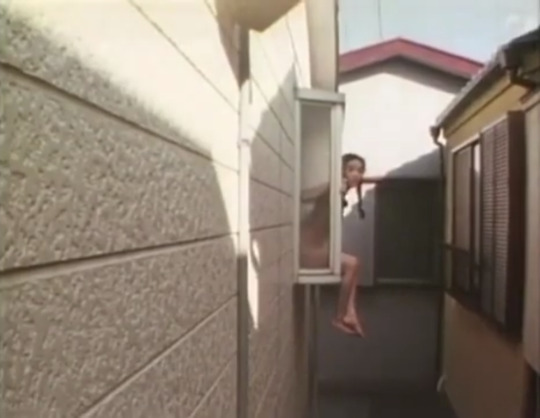


Peach Baby Oil (1995)
3 notes
·
View notes
Photo




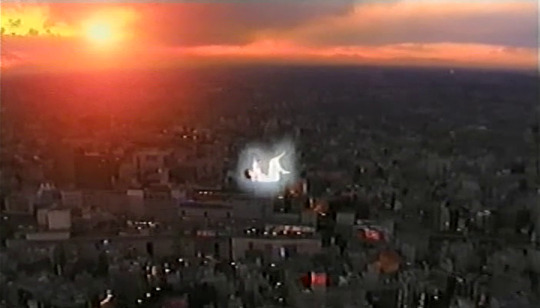
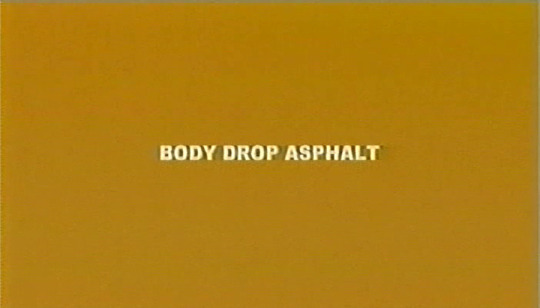
Body Drop Asphalt (2000), Junko Wada
66 notes
·
View notes
Photo
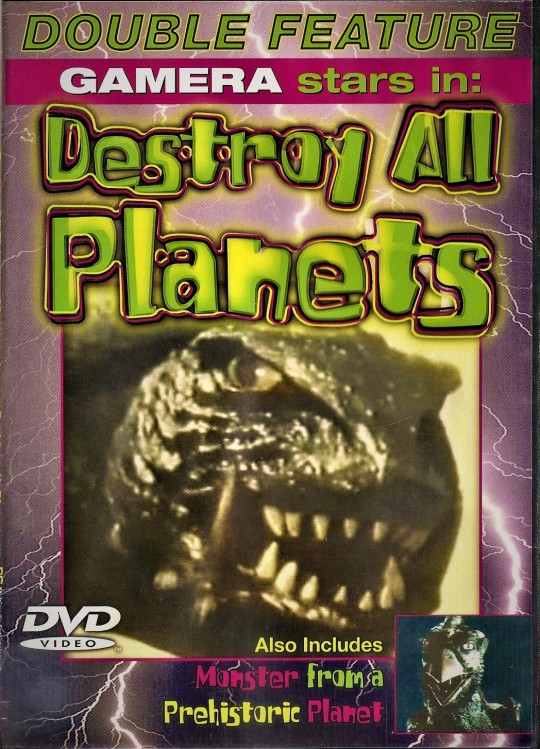
Bad movie I have Double Feature It has Destroy all Planets aka Gamera vs. Viras 1968 and Monster from a Prehistoric Planet aka Gappa the Triphibian Monsters 1967
#Destroy all Planets#Daiei Studios#Kôjirô Hongô#Tôru Takatsuka#Carl Craig#Michiko Yaegaki#Mari Atsumi#Junko Yashiro#Peter Williams#Monster from a Prehistoric Planet#Tamio Kawaji#Yôko Yamamoto#Yûji Odaka#Kôji Wada#Tatsuya Fuji#Keisuke Inoue#Zenji Yamada#Bumon Koto#Kôtarô Sugie#Saburô Hiromatsu
1 note
·
View note
Photo
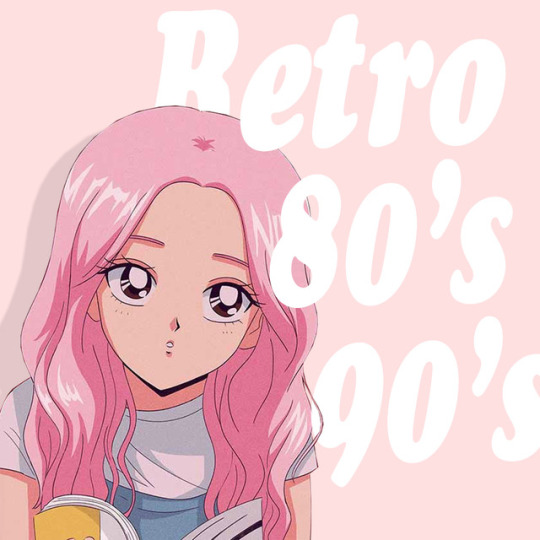

RETRO 80′s 90′s J-Pop
Playlist for min-min-aino97
A happy boppy playlist with 80s and 90s J-Pop.
Art by hanavbara
#meiko nakahara#kikuchi momoko#cindy#kanako wada#keiko kimura#wink#junko ohashi#toshi kadomatsu#hitomi#tomoko aran#mariya takeuchi#80's#90's#retro#j-pop#playlist#mix#music playlist#j-pop playlist#mine
49 notes
·
View notes
Text
Top 10 Manga Picks: the Origins of Manga-Loving Yumi Tamura!
Loosely translated from the Da Vinci Magazine August 2020 issue.
"Tamura has been creating works that span mystery, horror, fictional warfare, action, and fantasy genres. What kind of manga has she been reading up to now? We asked her to introduce the 10 works that inspired her to start drawing manga, as well as what she considers her heart's bible. Includes comments from Tamura herself!"
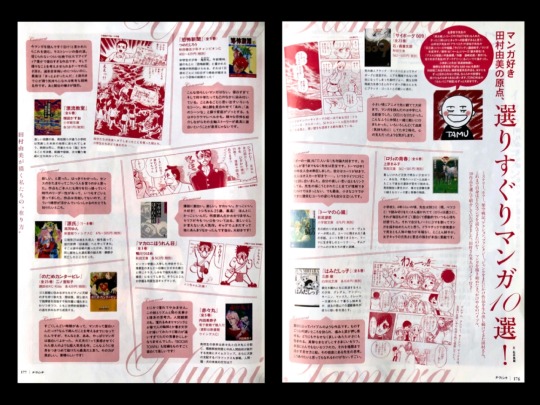
Yumi Tamura's Comments:
1. Cyborg 009 by Shotaro Ishinomori
"When I was little, I watched the anime first and loved it, and then I read the manga around the time I was entering junior high school. I wanted to be 003 and go into battle with friends in the same way. I feel like it was my emotional support during the period of my 2nd year in junior high when I was having a hard time and ran away from it all."
2. Lolly no Seishun by Kimiko Uehara
"When I was in the 3rd or 4th grade of elementary school, Uehara drew a lot of one-shots in Betsucomi ('Lolly' was a weekly comic), and they were so interesting and moving every time that I was constantly in a state of emotion. I think because of that, I began drawing manga in my notebook, splitting up the pages into panels. Dramatic & rich with emotion, the depicted characters by Uehara, whether men or women, are full of charm & utterly brilliant. The energy and willpower of the female characters is really wonderful."
3. Thomas no Shinzou by Moto Hagio
"Of course I love 'Poe no Ichizoku' & '11-nin Iru!' too. Needless to say, Hagio is the greatest treasure. When I was in the 1st year of junior high, my friend & I were crazy about 'Thomas'. I liked Juri and my friend liked Oskar... we talked about going to Germany someday. It links together my own happy memories. I'm sure I didn't understand everything Hagio was trying to draw, but in the end, even now I cry at the image of Juri smiling faintly in a small panel."
4. Hamidashikko by Jun Mihara
"To me, this work is like the bible. It relentlessly strikes the deepest part of the heart and brings forth a flood of pain and tears. It wraps you up in a warmth that's helplessly miserable, sorrowful. Sincere gazes and intense dialogues. The power of the dialogues is truly unbelievable. The way the dialogues are presented along with the drawings make the best use of that power. Mihara's careful thoughts are at the root of all this. Even though I'm already this grateful, I will never get used to it. It's just amazing."
5. Kyoufu Shinbun by Jirou Tsunoda
"This is the most terrifying manga I've ever read. It's so captivating, & even decades later, it's still ingrained in me. There are various scenes that I'll recall whenever something happens. My younger sister & I would look at each other & go like ‘it's that’ or ‘that one scene, right?!’ & it would send shivers down our spines. We're already at a level of trauma. It's uncommon for a main story line to be most interesting while introducing all sorts of horrors."
6. Hyouryuu Kyoushitsu by Kazuo Umezu
"If I was told to read a manga now that would make me cry right away, then I would choose this one. Particularly the last scene of the mother crying. This work is unbelievably fierce, grand, rich in ideas, & just too fascinating. And the themes are so broad & deep that it makes you think about many things. It's a rare transcendental masterpiece that will, in the end, leave you feeling comforted & positive, thinking ‘it was a good ending,’ even though the journey is extremely scary & painful. Also, my contempt for Sekiya is strong.”
7. Macaroni Hourensou by Tsubame Kamogawa
"This is explosively entertaining. Fun. Cute. Cool. I love it! 25-year old Toshi-chan is the best! He's so cool. I don't know how many times I've read this. I still say the lines out loud even now. This is a very popular work that I can only describe as fun. There are not many other gag manga that make me burst out laughing quite like this one. I love it!”
8. Akaaka Maru by Minako Uchida
"I just can't stop admiring this work in general. The drawings, the rhythm, the stunning midpoint [?], the ability to think in a scientific way. And the proficiency of observing people. I admired it so much that I tried drawing contours of people & handwriting with permanent markers & brushes, but my drawing skills were so different that I ended up with nothing but doodles. ‘BOOMTOWN’ & the short stories are also very interesting & fun!”
9. Genji by Yun Kouga
"Innovative, I thought. I could clearly understand it. Kouga seems to be the kind of person who has a lot of sense. I've always thought it was amazing how her work & she herself had leadership qualities of the time to pull others along. I would very much love to know what kind of ideas Kouga has in mind for the rest of this work, since it hasn't been completed yet.”
10. Nodame Cantabile by Tomoko Ninomiya
"There was a period when I was having a very tough time, & it got to the point where I was having unhealthy thoughts like, ‘Is manga even enjoyable?’ But then this work came along & I was like ‘Aah, manga is fun after all! Thank goodness, I'm okay!’ So, this is a super popular & famous work to which I owe a debt of gratitude for making me realize & genuinely feel this way. I think it would be the greatest if I could portray the world in a similar way with such thoroughness. I envy that power of Ninomiya's! It's magnificent!”
Additional side comment from Tamura (in the speech bubble):
“I wanted to include the Bijohime series (Hana no Bijohime) & PARTNER by Tomoko Naka too! (I think it's obvious that these have an influence on my characters.) Other works that also left a strong impact on me are Ryouko Yamagishi's Arabesque; Yuko Kishi's Tamasaburou series and short stories; Rising! (Saeko Himuro/Author, Kazuko Fujita/Artist); the Palm series (Yasei Kemonogi); Astro Kyuudan (Shirou Toozaki/Author, Norihiro Nakajima/Artist); & Dark Green by Junko Sasaki. Makoto Kobayashi's Judo-bu Monogatari & Nanae Haruno's PaPa told me are also excellent! There’re also many other works that I'll never forget, such as those by Shinji Wada & Udou Shinohara, which have all influenced me in some way. I've always loved TONO's Karubania Monogatari too.”

#Yumi Tamura#Tamura Yumi#Cyborg 009#Shotaro Ishinomori#Lolly no Seishun#Kimiko Uehara#Thomas no Shinzou#Moto Hagio#Hamidashikko#Jun Mihara#Kyoufu Shinbun#Jirou Tsunoda#Hyouryuu Kyoushitsu#Kazuo Umezu#Macaroni Hourensou#Tsubame Kamogawa#Akaaka Maru#Minako Uchida#Genji#Yun Kouga#Nodame Cantabile#Tomoko Ninomiya#Tomoko Naka#Ryouko Yamagishi#Yasei Kemonogi#Junko Sasaki#Makoto Kobayashi#Nanae Haruno#TONO#Shinji Wada
58 notes
·
View notes



